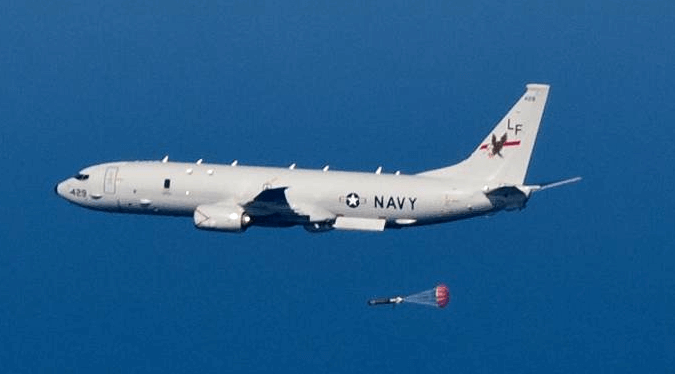The South China Sea has become an area of intense military operations especially since the second half of 2020, which has seen more combat-simulation drills by the PLA than ever before while the US counter this aggression with adequate firepower projection.
After Apaches, Chinooks & Poseidons, Boeing Looks To Ink Two Major ‘Fighter Jet’ Deals With India
With Taiwan in its focus, Washington has started cornering Beijing with a new arms race in the Asia-Pacific, by arming Taipei with state-of-the-art F-16V “Viper” jets and pushing F-35s into the region.
On August 26th, China said that it intercepted an American U-2 spy plane flying over its no-fly zone where its aircraft carrier Shandong was conducting crucial military drills, a move that seriously escalated the tensions in the region. Lately, Beijing had also accused U.S. Navy’s spy planes to be operating in its region with civilian IDs- each time warning to shoot it down.

Amid the events, the star of the U.S. Navy’s surveillance capabilities which has been harnessed to its best is the Boeing’s P-8 Poseidon maritime surveillance and anti-surface/submarine warfare aircraft, which has been used extensively in the region.
In the recent string of events, it was reported that a P-8A aircraft of the U.S. Navy took off on a surveillance sortie from the Kadena airbase in Japan armed with Harpoon anti-ship missiles.
The AGM-84 Harpoon missiles are considered to be one of the greatest threats to the PLA Navy’s ships in the region after the Indian BrahMos missiles, and the most used among the navies operating in the region.
While BrahMos is only carried by Indian surface ships on patrol in the South China Sea, Harpoon missiles are the mainstay of most major navies in the region, in service with Japan, South Korea, and most importantly, Taiwan.
The P-8 has 6 external hardpoints and 5 internal weapons bays which can carry a load of both AGM-84 Harpoon missile (and its variants), Mk-54 Torpedoes, depth charges, mines, and the latest HAAWC (which stands for High Altitude Anti-Submarine Warfare Weapon Capability, is an add-on kit for the Mk-54 torpedoes to enhance their range while firing from high altitude).
The U.S. Navy’s P-8As have been a crucial platform and probably the most feared by the PLA-Navy. Made specifically for maritime security roles and armed to the teeth, this aircraft is able to successfully deter and destroy any Naval intrusion or misadventure.
China has always been a critic of the aircraft’s deployment and its operations within the “nine-dash line,” an area which it considers as part of its own territory.
The aircraft has been popular among aviation enthusiasts and global navies alike. Apart from the U.S. Navy, till now, it has been exported to Australia, United Kingdom, Norway, New Zealand, South Korea, and most importantly to Beijing’s regional foe – India.
While the aircraft was specifically made for maritime surveillance and maritime warfare usage, the Indians have been very successful in harnessing its capabilities on land too. The P-8’s Indian export variant, the P-8I Neptune, is also equipped with a CAE Inc AN/ASQ-508A Magnetic Anomaly Detector (MAD) and a Griffon Corporation Telephonics APS-143C(V)3 multi-mode radar.
Currently, the Indian Navy has deployed the P-8I Neptune in Ladakh as a surveillance platform, complementing its MiG-29K and the Indian Air Force’s MiG-29UPG, Mirage-2000, Su-30MKI, and other fixed-wing and rotary-wing aircraft in the region.
The platform can be successfully used in battlefield surveillance and management roles, which was also done during the 73-day Doklam standoff among Indian and PLA troops in 2017.
In 2020, the Chief of Defense Staff of the Indian forces, Gen. Bipin Rawat revealed “I came to know about the capabilities of the P-8I anti-submarine warfare planes after they were deployed in Doklam for surveillance.” It was also used during the 2019 Pulwama attack aftermath, where it was used to keep an eye on the Pakistani army movements.